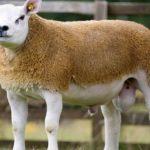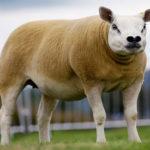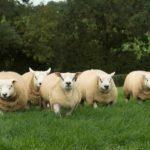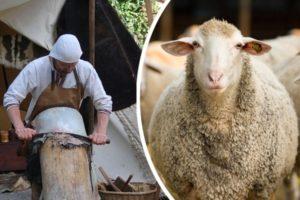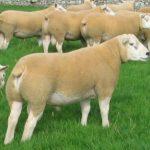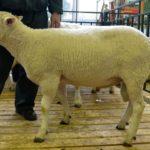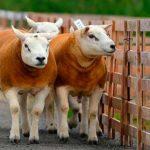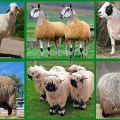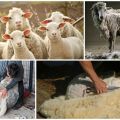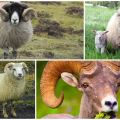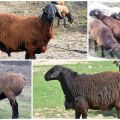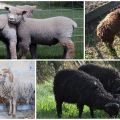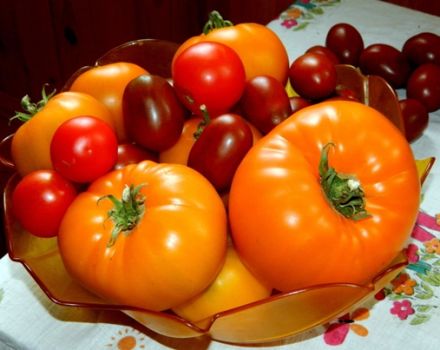Description and characteristics of Texel sheep, housing conditions and care
For centuries, people have raised sheep for wool and meat. These animals are unpretentious in food and maintenance, grow and reproduce quickly. Selecting the best representatives of the herd, man has developed new breeds of animals with improved characteristics. For example, Texel sheep yield not only a lot of meat, but also high-quality wool of an amazingly beautiful shade.
Breeding history
The Texel breed originates from the Roman Empire. The ancestors of the breed supplied meat and wool to Roman legionnaires. The first information about the modern breed dates back to the 19th century. Texel sheep got their name from the Dutch island of Texel, from which they came to Britain. Long-term breeding work of the British made it possible to obtain individuals with tender lean meat and high-quality wool. Lincoln, Kent, Leyster, Wendsleydale, crossing these breeds with the Dutch founder allowed us to get modern texels - large animals with a beautiful fleece.
Details about the breed
Texel sheep are large animals with thick wool. There are 3 types of breed:
- Dutch - the largest individuals;
- English - it is distinguished by great grace, long legs, less body weight;
- French - fast growing lambs.
The animals differ in proportional constitution, the back is straight, the legs are stable, strong. Sheep are 80-85 centimeters tall, sheep are 70-75 centimeters tall. The weight of rams reaches 130-140 kilograms, sheep - 70-80 kilograms. Lambs are born with a weight of 5-8 kilograms.
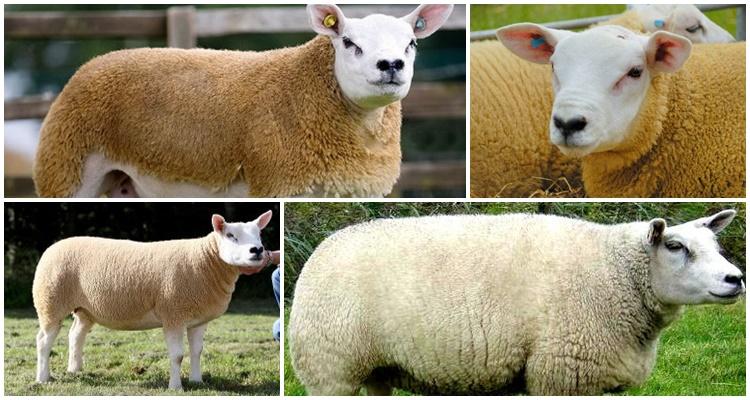
Characteristics of Texel sheep:
- The head has short, widely spaced ears.
- The animals are hornless; rams sometimes have the rudiments of horns.
- Short and thin tail.
- The forehead and head between the ears are free of hair.
- Wool can be white, blue-white, red-coffee with a golden tint.
- The head is white with a dark nose, there may be dark spots around the ears or eyes.
Sheep of this breed do not get bored alone, they have a calm disposition.
Pros and cons of Texel Sheep
During the existence of the breed (about 200 years), its most valuable qualities have been developed, the disadvantages have become less significant.
There are much more advantages than disadvantages, this is due to the popularity of the breed among livestock breeders.
Conditions of maintenance and care
Animals are in the pasture in summer, in stalls in winter. When choosing a pasture, it is necessary to ensure that there are no poisonous herbs (celandine, aconite, henbane) on it. Walking areas are fenced off. Fences are made strong and high enough so that animals do not jump over and break the fence. The reservoirs from which animals drink must be flowing. Animals are not grazed on wet grass (through dew, frost, after rain) - due to the peculiarities of digestion, intestinal swelling occurs.
In winter, it should be light in the sheepfold, the temperature for texels is maintained at + 10 ° C. The floors are covered with a thick layer of straw. Feeders are built for several sheep, at a height of 50 centimeters from the floor. Sheep drink a lot, there should be free access to water. Texels drink 8-10 liters per day. Containers with chalk and salt are placed next to the feeders. Each animal requires 2 square meters of area. Sheep, ewes and lambs are kept separately from the main herd.
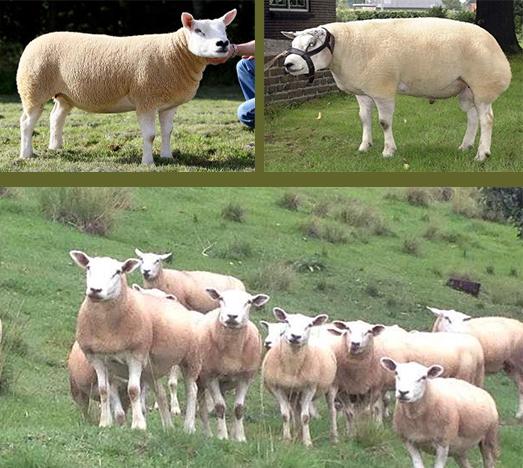
Animals are sheared in summer, at a temperature of + 20-23 ° C, the wool is cut evenly, at the base. Scratches and accidental cuts are disinfected.
Diet
In summer, sheep are grazing, feeding on green grass, getting all the necessary substances from it. In winter, animals are fed with hay, steamed grain or cereals, steamed corn, a mash of vegetables are added. Requires 3 feedings per day. Ewes are kept separately from the livestock, in a room with a temperature of + 13-15 ° С
Reproduction
Animals reach sexual maturity at 9-10 months. Sheep and ewes are brought together at the age of one and a half years. The mating takes place in September-January. Pregnancy in sheep lasts 5 months. There are 1-3 lambs in the litter, depending on the age of the ewes. A veterinarian must be present at delivery. Because Texel lambs have large heads, childbirth complications often occur. The lambs immediately stand on their feet, in a day they are ready to follow their mother. Babies gain weight well, but after 3 months of age they begin to lose it.
Diseases, their prevention
Texel sheep are hardy and disease resistant. Keeping in a warm sheepfold prevents the development of pneumonia. Eating the right diet will help prevent bloating. Animals must be worm driven 3 times a year. Sheep are treated with hooves, they are trimmed at least 2 times a year, before going out to the pasture, at the end of the stall period, and then, as necessary.
If a sheep has lost its appetite, became lethargic, or vice versa, too excited, jumpy, eyes inflamed, wear and tear discharge appeared, fever rose, diarrhea began, it is necessary to separate it from the rest of the livestock and call a veterinarian.
To avoid bradzot, anthrax, brucellosis and many other dangerous diseases, the livestock is vaccinated. The list and sequence of vaccine administration, as well as vaccination marks of the livestock, are kept in the district veterinary service.
Breeding prospects
The high quality of meat and wool, the impressive size of the sheep and rams, their endurance and calm disposition suggest that the breed is promising in Russia. So far, purebred Texel sheep are almost never found in our farmsteads. For breeding, it is better to bring them from Europe. Importing animals with all the necessary documents is not a cheap pleasure.

Estimated cost and where you can buy
Texel sheep can be imported to Russia from Europe or bought at various agricultural fairs. Texeli is bred by the Aleksandrovsky breeding plant (in the Voronezh Region), and the Pushkin Myasnoy Dvor (in the Moscow Region). Information about breeders can be found on the official websites of breeding farms or in social networks. The cost of bright and sheep is from 20,000 rubles. Lambs can be found cheaper.
There are more and more farms in Russia, livestock breeding is developing, highly productive breeds appear. The Texel breed has not lost its prospects over the long years of its existence, which is why sheep farmers bring it today, and the number of livestock continues to grow, which means that the price per head is decreasing, and it becomes possible to acquire good animals for their own farmstead not too expensively.
